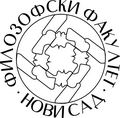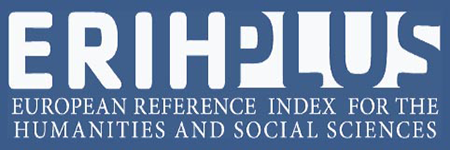НАДМЕТАЊЕ, ЗНАЧЕЊЕ И МОНУМЕНТАЛИЗАЦИЈА У ГАЛИЈИ КОМАТИ
DOI:
https://doi.org/10.19090/i.2021.32.7-20Кључне речи:
романизација, империјализам, Галија, гало-римска култура, амфитеатри, преримска Галија, римски споменици, римске провинцијеСажетак
Римска управа у Галији се ослањала на локалну елиту како би владала у име Рима. Била је то иста локална елита која је финансирала и градила монументалну архитектуру у провинцијама са којом се и идентификовала. Стога, оно што нам на први поглед изгледа као исказивање римске културе, мора заправо бити разумевано унутар контекста локалних елита, стандарда ауторитета и исказивања моћи.
Рани галски споменици имали су римске архитектонске типове и представљали су непрецизно слеђење елемената Августовог културног програма. Публика за ове споменике била је римска и настојала је да проглашава локалну верност извору царске моћи. Почевши од грађевинских активности Гаја Јулија Руфа у време Тиберија, догодила се значајна промена. Руфова изградња лука посвећеног Германику у сопственом родном граду, као и подизање амфитеатра на локалитету Кондат, комеморише управо њега као градитеља. Ови споменици такође експлицитно преносе Руфово наслеђе будућим генерацијама јер и у њихово име и пред будућим царевима оглашавају његов статус и лојалност. У следећем поколењу, Руфов рођак, Гај Јулије Виктор, по сличном обрасцу је подигао амфитеатар у породичном родном граду, док су и оближњи градови и друге регионално моћне породице отпочеле изградњу амфитеатара. До краја I века, подизање амфитеатара, употребом сличних ако не и истих архитектонских техника, проширило се од Аквитаније до Белгике, а сви су били посвећени својим финансијерима и предвиђени за успостављање трајне породичне баштине.
Иако се не може понудити конкретан разлог зашто су галске елите биле фокусиране баш на амфитеатре, може се предложити неколико могућности. Укратко, амфитеатри су служили као средство путем којег је претходно ратничка галска аристократија могла да се надмеће и показује сличне вредности ратничких вештина и јавне користи. Ширење римских споменика, а посебно амфитеатара, на тај начин је служило као начин да галска аристократија публици искаже своју подобност као водећег дела друштва и унутар контекста империјалног система.
Downloads
Референце
Bettina, A. Blair Gibson, D. (eds.), Celtic Chiefdom, Celtic State: The Evolution of Complex Social Systems in Prehistoric Europe, Cambridge: Cambridge University Press, 1998.
Crumley, C. Celtic Social Structure, Ann Arbor: The University of Michigan, 1974.
______. ‘Heterarchy and the analysis of complex societies’, in: R.M. Ehrenreich, C. Crumley, and J.E. Levy (eds.), Heterarchy and the Analysis of Complex Societies, Washington, DC: American Anthropological Association, Archaeological Papers No. 6, 1995, 1–5.
Cunliffe, B. Greeks, Romans, and Barbarians, Avon: The Bath Press, 1988.
Drinkwater, J.F. ‘Lugdunum, ‘Natural Capital’ of Gaul?’, Britannia, 6, 133–140.
______. ‘The Rise and Fall of the Gallic Julii’, Latomus, 37/4, 817–850.
Dumasy, F. ‘Théâtres et amphithéâtres dans les cités de Gaule romaine: fonctions et repartition’, Études de lettres, 1-2, 193–222.
Earle, T. ‘Property Rights and the Evolution of Chiefdoms’ in: T. Earle (ed.), Bronze Age Economics: The Beginnings of Political Economies, Boulder (CO): Westview Press, 2002, 325–347.
Esmonde-Cleary, S. Rome in the Pyrenees: Lugdunum and the Convenae from the First Century B.C. to the Seventh Century A.D, London/New York: Routledge, 2007.
Fagan, G. The Lure of the Arena: Social Psychology and the Crowd at the Roman Games, Cambridge: Cambridge University Press, 2011.
Futrell, A. Blood in the Arena: The Spectacle of Roman Power, Austin (Tx): The University of Texas Press, 1997.
Girardy-Caillat, C. Périgeux antique, Paris: Imprimerie Nationale, 1998.
Hanson, J. A. Roman Theater-Temples, Westport, Connecticut: Greenwood Press, 1978.
Harmand, J. ‘La vie monumentale des théâtres gallo-romains’, Latomus, 49/2, 393–410.
Haselgrove, C. ‘Roman impact on rural settlement and society in southern Picardy’ in: N. Roymans (ed.), From the Sword to the Plow: Three Studies on the Earliest Romanization of Northern Gaul, Amsterdam: Amsterdam University Press, 1996, 127–188.
Irvin, A. ‘The Political Organisation of the Civitates of the Three Gauls and the Myth of Republican Exceptionalism’, in: Sergio González-Sanchez and Alexandra Guglielmi (eds.), ‘Romans’ and ‘barbarians’ beyond the frontiers: Archaeology, Ideology, and Identities in the North, Oxford: Oxbow – TRAC Themes in Roman Archaeology 1, 2017, 137–151.
King, A. Roman Gaul and Germany, London: British Museum Publications, 1990.
Lamoine, L. Le Pouvoir Local en Gaule Romain, Paris: Presses Universitaires Blaise-Pascal, 2009.
Lintott, A. ‘What was the ‘Imperium Romanum’?’, Greece and Rome, 28/1, 53–67.
Martin, J.P. ‘Une Grande Ailliée des Romains’ in: Pierre Desportes (ed.), Histoire de Reims, Toulouse: Private, Editeur, 1983, 13–14.
Matter, M. ‘Particularités architecturales des édifices de spectacles en Gaule Lyonnaise’, in Spectacula 2. Le théâtre antique et ses spectacles. Actes du colloque tenu au Musée archéologique Henri Prades de Lattes les 27, 28, 29 et 30 avril 1989, Lattes: France, 1992, 29–36.
Maurin, L. Thauré, M. Saintes antique. Paris: Impremerie Nationale. 1994.
May, R. St.-Betrand-de-Comminges (Antique Lugdunum Convenarum): le point sur la connaissances, Toulouse: APAMP, 1986.
Pelletier, A. Le Sanctuaire Métroaque de Vienne: Études Préliminaires aux Religions Orientales dans l’Empire Romain. Leiden: E. J. Brill. 1980.
______. Vienne Antique, Le Coteau: Editions Horvath, 1982.
Picard, Ch. ‘Un sacrifice métroaque à Vienne (Isère)’, Revue Archéologique, 26, 159–162.
______. ‘Les theater des Mystères de Cybèle-Attis à Vienne (Isère) et les théâtres pour representations sacrées à travers le monde méditerranéen’, Comptes Rendus de l’Academie des Inscriptions et Belles Lettres 98, 229–248
Picard, G. ‘Les théâtres ruraux de Gaule’, Revue Archéoligique, 50/1, 185–192.
Pinette, M. Rebourg, A. (eds.). Autun: Ville gallo-romaine, Paris: Impremerie Nationale, 1986.
Rebourg, A. Goudineau, Ch. Autun antique, Paris: Monum, Édiitions du Patrimoine, 2002.
Roymans, N. Tribal Societies in Northern Gaul. Amsterdam: Albert Egges van Giffen Instituut voor Prae- en Protohistorie, 1990.
Tyrrell, M. ‘All the treasures of Reims’, posted February 9th, 2009, last modified January 23rd, 2017 (https://www.inrap.fr/en/all-treasures-reims-12156).
Vanderhoeven, A. ‘The earliest Urbanization in Northern Gaul. Some implications of recent research in Tongres’ in: N. Roymans (ed.), From the Sword to the Plow: Three Studies on the Earliest Romanization of Northern Gaul, Amsterdam: Amsterdam University Press, 1996, 189-260.
Wells, P. Culture Contact and Culture Change: Early Iron Age Europe and the Mediterranean World, Cambridge: Cambridge University Press, 1980.
Wightman, E. Roman Trier and the Treveri, London: Rupert Hart Davis, 1970.
______. Gallia Belgica, London: BT Batsford, Ltd., 1985.
Will, E. La sculpture romaine au Musée Lapidaire de Vienne, Vienne: Syndicat d’Initiative, 1952.
Woolf, G. Becoming Roman: The Origins of Provincial Civilization in Gaul, Cambridge: University of Cambridge Press, 1998.













